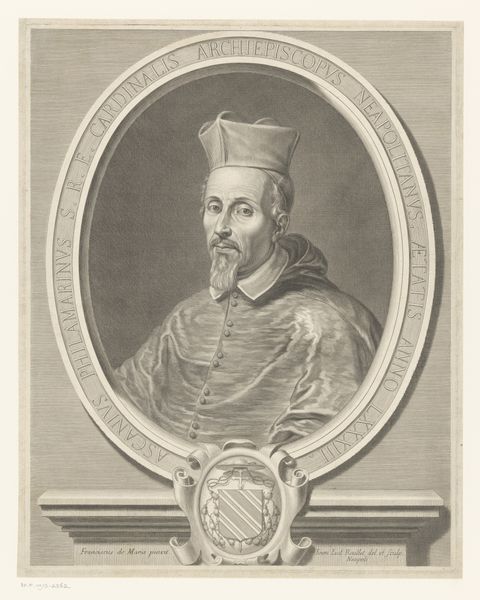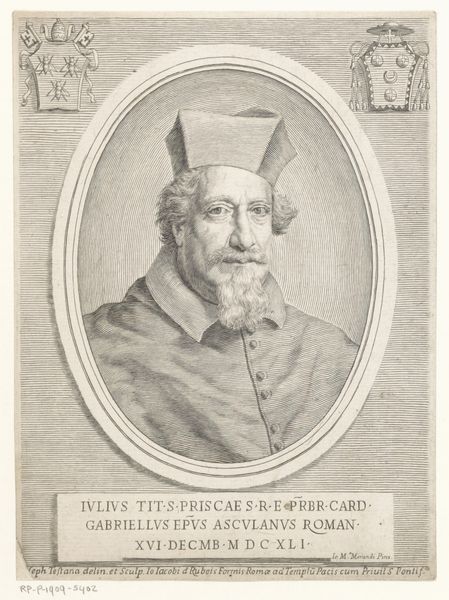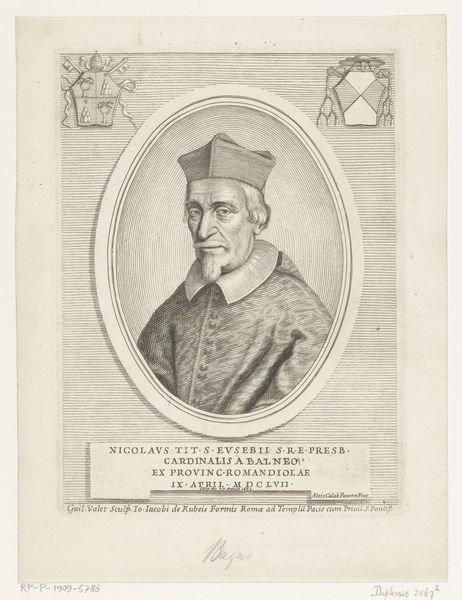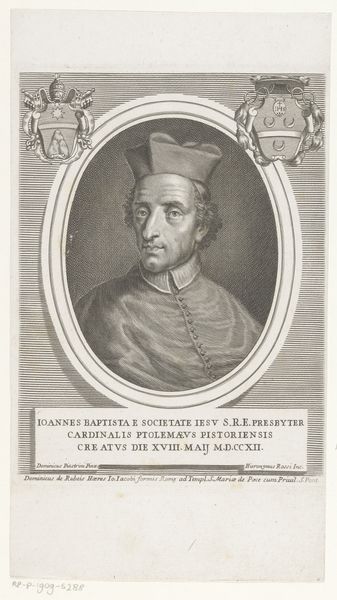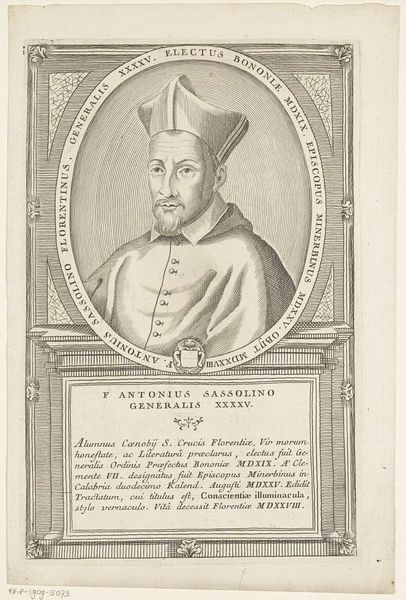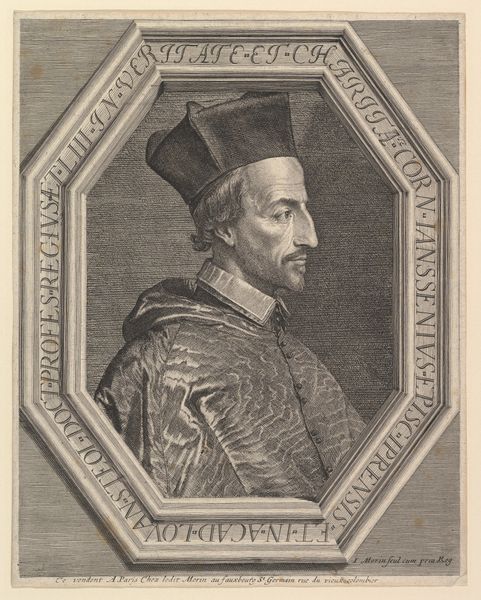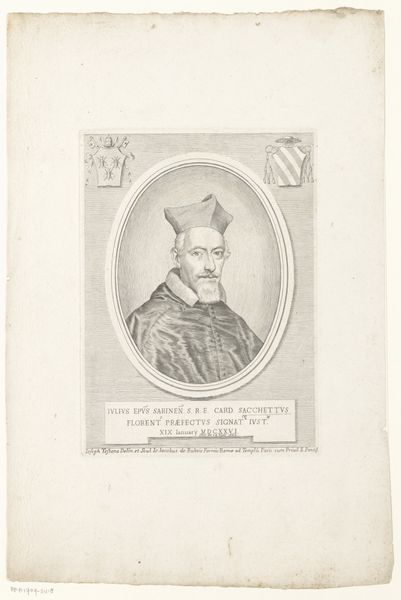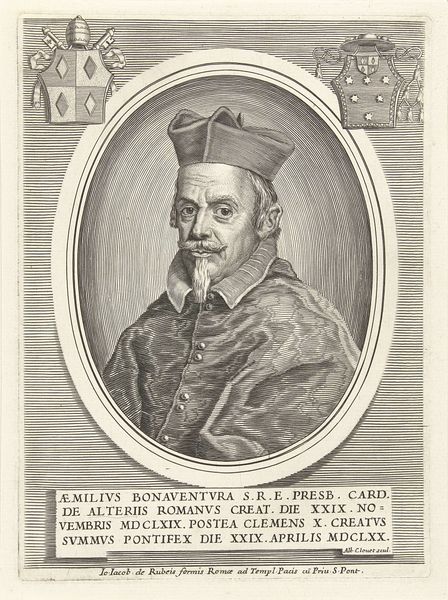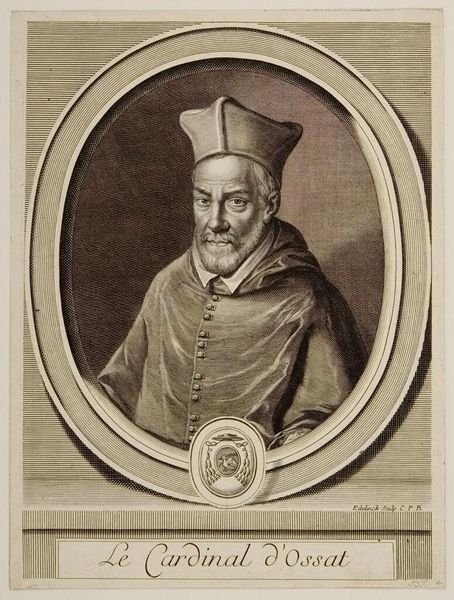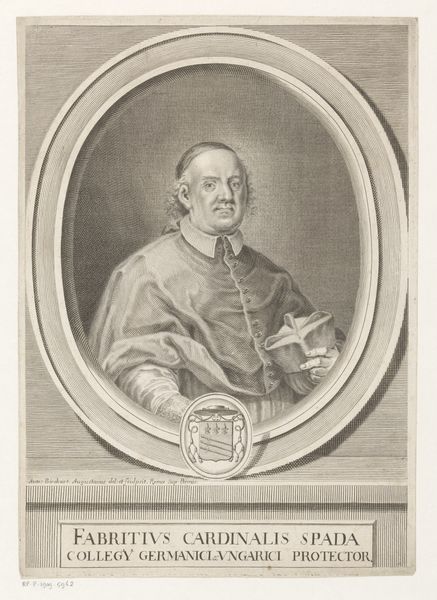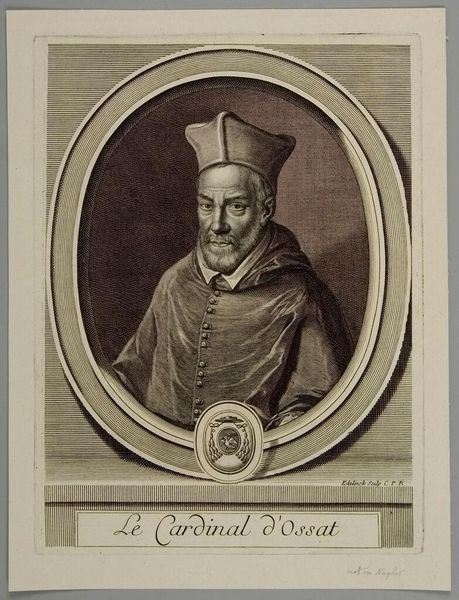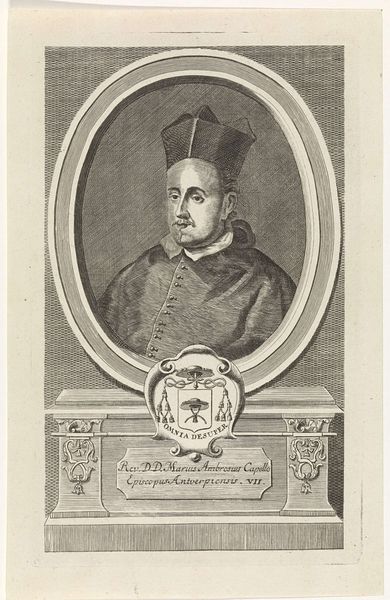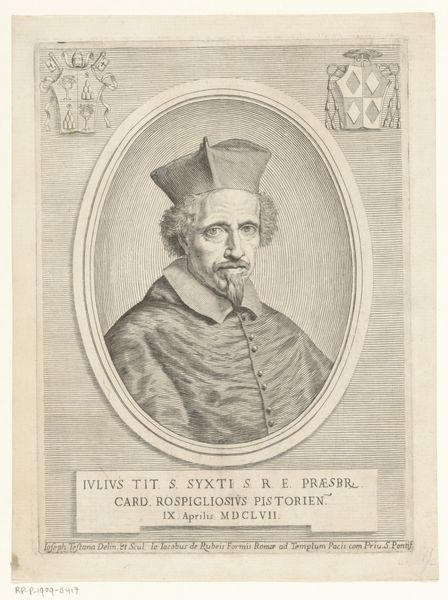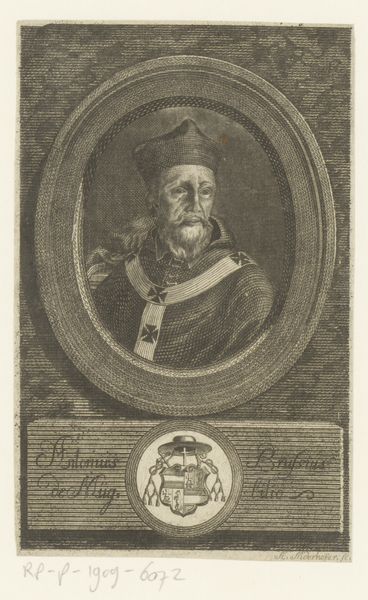
print, metal, engraving
#
portrait
#
baroque
# print
#
metal
#
line
#
engraving
Dimensions: height 194 mm, width 142 mm
Copyright: Rijks Museum: Open Domain
Editor: So, this is "Portret van kardinaal Camillo Melzi," dating from between 1658 and 1679, made by Giuseppe Maria Testana. It's an engraving, using metal as the medium. It's interesting how the lines create so much detail. What can you tell me about this piece? Curator: It's fascinating to consider this portrait through a material lens. Think about the copper plate, the tools used to incise the image, the ink carefully applied and then pressed onto the paper. The *act* of making becomes so apparent. Editor: So you are talking about process and craft rather than artistry? Curator: Absolutely. While we can admire the skill in rendering the cardinal's likeness, what intrigues me is the *system* of production. This wasn't a unique, one-off creation for a wealthy patron. Prints like this were produced in multiples, becoming a form of visual currency, circulating images of power. How does that mass production impact its meaning? Editor: I hadn't considered the social context of its production like that. It feels much more accessible than, say, an oil painting meant only for a private collection. The print allows the Cardinal's image to circulate more widely, acting almost like early PR. Curator: Exactly! It democratizes the image, albeit within the confines of its intended social stratum. Now consider the engraver, Testana. He is a craftsman participating in a commercial venture. Where does his skill fit into a hierarchical artistic system? Is he elevated or subsumed by the project? Editor: It blurs the line between art and craft in an interesting way. It also really speaks to the dissemination of power. Curator: Precisely. This close examination of process has highlighted how value and meaning can reside as much in production as in representation. I've come to view Baroque portraiture, not just as celebratory of powerful persons, but instead, more interested in how systems affect the creation and subsequent consumption of powerful art itself.
Comments
No comments
Be the first to comment and join the conversation on the ultimate creative platform.
